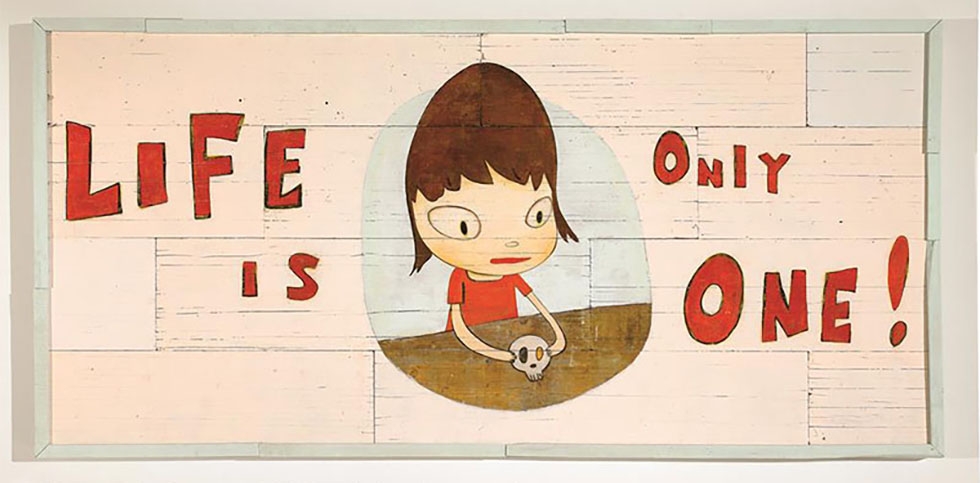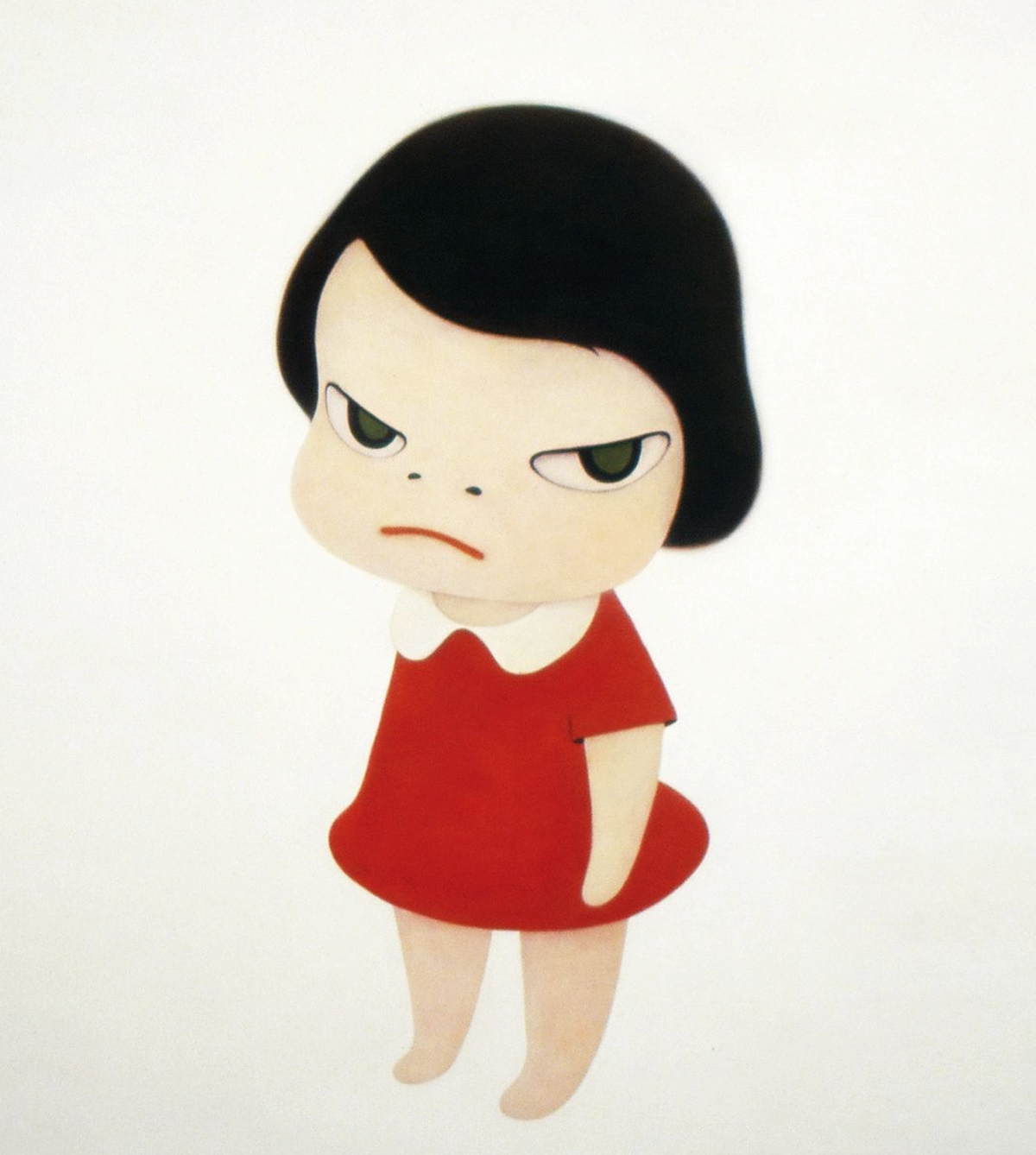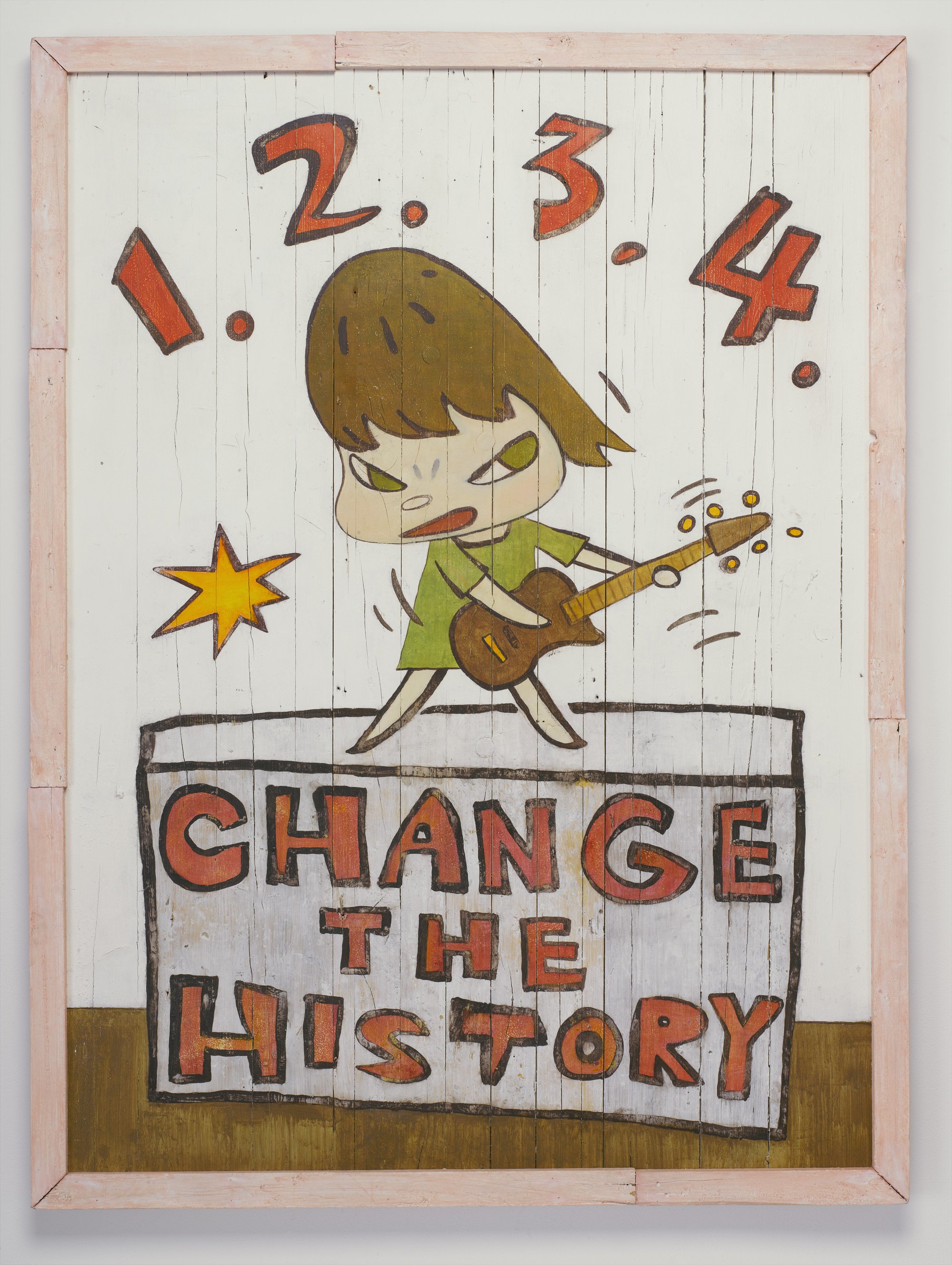Yoshitomo Nara

Born in Aomori, Japan, in 1959, Yoshitomo Nara emerged from a postwar generation shaped by rapid modernization and global media. After earning his master’s degree in 1987 from Aichi University of the Arts, Nara moved to Germany to study at Kunstakademie Düsseldorf. This cross-cultural education helped him synthesize Japanese pop culture and Western punk rebellion into a wholly original visual language.

Nara is best known for his paintings of solitary children with huge eyes, figures that bounce between innocence and defiance. But behind those simple forms is a deeply introspective process: he layers and erases paint repeatedly until only the rawest emotion remains. These haunting children act as psychological mirrors, inviting the viewer to sit with their own inner misfit.

Beyond painting, Nara creates installations, drawings, sculptures, and photographs. His ephemeral installations, like plywood huts filled with drawings and soft light, feel like entering the artist’s mind. He also works in bronze, ceramic, and fiber-reinforced plastic, often blurring the line between child’s play and existential philosophy.

A self-proclaimed wanderer, Nara is as much a cultural anthropologist as he is an artist. His travels, love of music, and engagement with global events have transformed his work into a meditation on impermanence, trauma, memory, and resilience.

?
How do Nara’s portraits challenge traditional ideas of childhood?
What does rebellion look like when it’s quiet?
How do materials like plywood or torn paper add meaning to his work?
In what ways did global events, like the 2011 earthquake, shift Nara’s artistic focus?
What can we learn about emotional honesty from Nara’s process of layering and erasing paint?
Dig Deeper
An overview of Nara’s creative journey, influences, and exhibitions from around the world.
Discover more

Yayoi Kusama
Yayoi Kusama teaches us that even the most private pain can bloom into something cosmic. Her dots don’t just decorate, they dissolve boundaries, inviting us to lose ourselves and find something bigger: connection, healing, infinity. In her world, vulnerability isn’t weakness, it’s the gateway to wonder.

Roy Lichtenstein
Lichtenstein reminds us that art can be both critical and playful. He dared to ask: what makes something 'art'? A museum wall, a famous name, or the act of seeing itself? By remixing the icons of culture—high and low—he taught us that imitation isn't always the opposite of originality. Sometimes, it's the beginning of deeper meaning.

Andy Warhol
Warhol showed us that art doesn’t have to be rarefied — it can be mass-produced, branded, and broadcast. He turned the ordinary into icons and held up a silkscreened lens to our obsessions, proving that culture itself could be both canvas and critique.
Further Reading
Stay curious!
